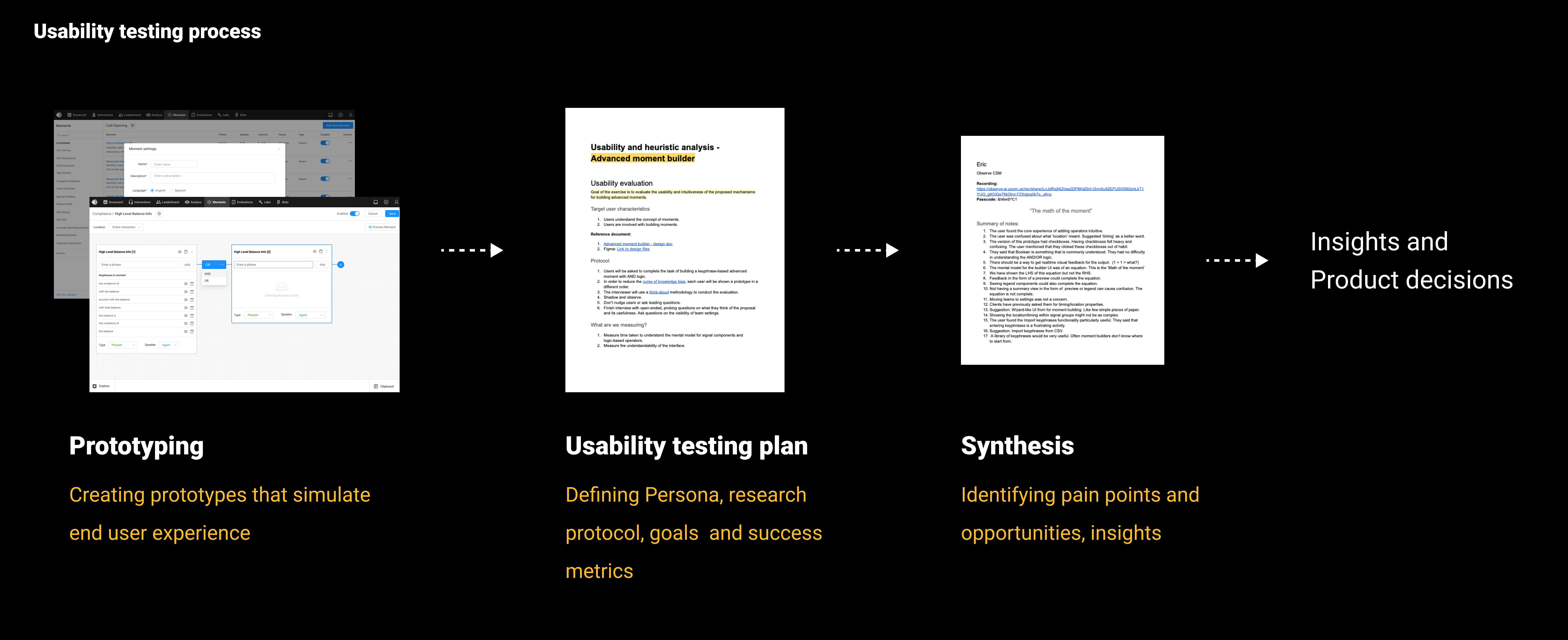Observe.AI • 2020-22

At Observe.ai, I started and led user research efforts with the goal of finding pain points and opportunities in the user experience. We focused our research efforts on deriving actionable insights, i.e., those that move the product forward.
Choosing the right research method is as much an art as a science. Different methods are relevant for different stages in the design process and the type of the problem.
We categorize research efforts into three types:
- Exploratory research
- User research and usability testing
- Continuous feedback
Exploratory research
The goal of exploratory research is to find pain points and latent opportunities through user interviews.

Example: User management and org hierarchy
Process
- User research plan
- Plan script
- Operations and scheduling
- Conduct interviews
- Documentation
- Synthesis
- Insights.
Impact
- Discovered high-impact opportunities
- Built conviction on the product direction
- Facilitated the team to make product prioritization decisions confidently.
User research and usability testing
The goal of user research and usability testing is to validate user experiences in the design stage. We use different methods for testing like A/B tests, Shadow testing, and Heuristic evaluations.

Example: Advanced Moment builder
Process
- Creating prototypes
- Usability testing plan
- Persona definition
- Research Protocol
- Goals
- Success metrics
- Synthesis
- Insights and decisions
Impact
- Built conviction and consensus on the product design direction
- Validated user experience in a low-cost manner
Continuous feedback
This effort aims to continuously collect user feedback through regular customer interactions, monitor product metrics and input from CSMs, keep a tab on customer escalations, etc. We collated the feedback and used it in exploratory research to find product gaps and opportunities.
As a design lead, I ensured the following:
- The product design team meets at least one customer per week.
- Bi-weekly or monthly tracking of user metrics for all initiatives.
- Monitoring customer escalations and proactively handling relevant escalations.
- Tracking sales wins and losses to find gaps and opportunities.
- Monthly interactions with customer-facing teams like Sales, CSEs, and CSMs to understand critical pain points and gaps.
- Categorizing feedback into opportunities, pain points, feature requests, and gaps from the competition.


